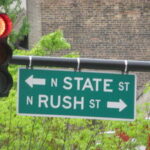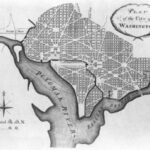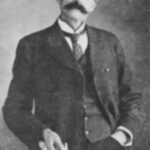What would our lives be like without traffic signals? We see them at almost every intersection. One of the first things you learned walking to school every morning was to pay attention to traffic signals. Watch the walk and don’t walk signs. We were taught only cross the street when traffic stops at the red light and the walk sign is blinking. What would happen in a world without communication at intersections? Cars, trucks, school buses, bicyclists and students walking to school would try to squeeze through the intersection, all at once. You would never get to school on time. Your safety would be at risk. We have African American Inventor Garrett Augustus Morgan, to thank for making communication on the road possible.
Garrett Morgan was an inventor and businessman who was far ahead of his time. Garrett Augustus Morgan was born on March 4, 1877, in Paris, Kentucky. He was the seventh of eleven children. His parents were former slaves. Like the majority of children at the time, he spent his early childhood working with his brothers and sisters on the family farm. His formal education stopped at the 6th grade. He left the farm as a teenager and moved to Cincinnati, Ohio in search of new opportunities.
Morgan found such an opportunity and in 1895 he moved to Cleveland, Ohio. Although Garrett Morgan did not have any formal education beyond elementary school, he hired a tutor to instruct him in English grammar while he was living in Cincinnati. In 1895, Morgan moved to Cleveland, Ohio where he went to work as a sewing machine repair man for a clothing manufacturer. He was extremely successful at fixing things and experimenting with inventions. News of his creativity spread rapidly and he had many job offers from manufacturing firms in the area.
In 1907, he started his own sewing equipment and repair shop. It was the first of several businesses that he would establish. His business grew to over 32 employees and by 1909, his firm was manufacturing coats, suits and dresses. These products were manufactured with specialized equipment that Morgan invented. He patented his sewing machine stitch, known as the zig-zag stitch. Our clothes are held together today with that same stitch.
It was during this time that Morgan came upon his first invention. While working in his shop, he noticed that the needle of a sewing machine moved so fast that its friction often scorched the thread of the woolen materials. He then set out to develop a liquid that would provide a useful polish to the needle, which would reducing friction. When his wife called him to dinner, he wiped the liquid from his hands onto a piece of pony-fur cloth. When he returned to his workshop, he saw that the fibers on the cloth were now standing straight up. He theorized that the fluid had actually straightened the fibers. To confirm his theory, he decided to apply some of the fluid to the hair of a neighbor’s dog. The fluid straightened the dog’s hair so much, the neighbor, not recognizing his own pet, and chased the dog away. Morgan then decided to try the fluid on himself. He put it on small portions of his hair at first, and then to his entire head. He was successful and had invented the first human-hair straightener. He marketed the product under the name the G. A. Morgan Hair Refining Cream and sold by his G. A Morgan Refining Company, which became a very successful business. A variation of this product is still used to straighten hair today.
Morgan continued his creative venture. Morgan continued in his quest to solve problems. In 1914, Morgan invented a device, which he called the Morgan safety hood and smoke protector. In 1916, he made national news for using his invention to rescue 32 men who were trapped during an explosion in an underground tunnel 250 feet under Lake Eric. Morgan and several volunteers put on the “gas masks’ and became the rescue party. After the rescue, the company received requests from fire departments all over the country that wanted to purchase the new masks.
Soon, orders came in from fire and police departments across the country. Unfortunately, many of these orders were cancelled when it was discovered that Morgan was Black. Apparently, many people would rather face danger and possibly death than rely on a lifesaving device created by a Black man. Nonetheless, with the outbreak of World War I and the use of poisonous gases therein, Morgan’s Safety Hood, now known as the Gas Mask, was utilized by the United States Army and saved the lives of thousands of soldiers.
In 1914, Morgan’s mask was patented for a Safety Hood and Smoke Protector. In 1916, a redesigned version of his earlier mast won a gold medal at the International Exposition of Sanitation and Safety and an additional gold medal from the International Association of Fire Chiefs. At that time Morgan was honored by many influential people around him, including such business tycoons as John D. Rockefeller and J.P. Morgan (after whom he named one of his sons.) Although his successes had brought him status and acclaim, Morgan never forgot that his fellow African Americans still suffered injustices and difficulties. His next endeavor in 1920,sought to address these concerns as he started a newspaper called the Cleveland Call (later renamed the Call & Post.) He also served as Treasurer of the Cleveland Association of Colored Men, which eventually merged with the National Association for the Advancement of Colored People (NAACP) and ran as a candidate for Cleveland’s City Council.
As time went on, he became very successful and was widely respected as a businessman. He had the financial means to purchase a home and an automobile, which was highly unusual for African Americans at that time. As a result of Morgan’s driving experience along the streets of Cleveland, he was inspired to invent an extremely critical creation which affects us every day, the traffic signal. This communication device controls our infrastructure system every day.
Although the first American made automobiles were introduced to the U.S. in the late 1800’s, the industry began to grow when the Ford Motor Company was founded in 1903. The nation was just starting to enjoy the open road. During this time, it was not unusual for bicycles, animal powered wagons and automobiles to share the same roadway with pedestrians. Accidents were frequent and bloody. Mr. Morgan, after witnessing such a bloody collision between and automobile and horse-drawn carriage, decided that something should be done about the flow of traffic to improve safety. While others tried and failed in the past, Morgan was successful at engineering and patenting his device. His patent was granted on November 20, 1923. He also patented his technology in Great Britain and Canada.
The Morgan traffic signal was a T-shaped pole that featured three positions: Stop, Go and an all-directional stop position. The third position halted traffic in all directions before it allowed travel to resume on either of the intersection’s perpendicular roads. This feature not only made it safer for motorists to pass through intersections, but also allowed pedestrians to cross more safely.
At night or other times when traffic was minimal, the Morgan signal could be positioned in a “half-mast” posture, alerting approaching motorists to proceed through the intersection with caution. The half mast position had the same signaling effect as the flashing red and yellow lights of today’s traffic signals.
Garrett Morgan’s hand-cranked traffic device was used throughout North America until all manual traffic signals were replaced by the automatic red, yellow and green-light signals that we currently use. Morgan eventually sold the technological rights to his invention to General Electric Corporation for only $40,000.
As word spread across North America and England about Morgan’s life saving inventions, such as the gas mask and the traffic signal, the demand for these products grew far beyond his wildest dreams. He was frequently invited to speak at conventions and exhibitions around the country to showcase his technology. Shortly before his death in 1963, the U.S. Government awarded Morgan a citation for the traffic signal.
The United States Department of Transportation considers Mr. Morgan the father of Transportation Safety Technology. His automatic traffic signal stands as a significant contribution in the evolution of traffic management. His lifetime of achievements reflects a dedication to public service, safety, and technological innovation.







